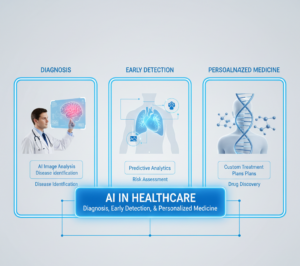Top Green Tech Innovations for a Sustainable Future
In today’s world, sustainability is more important than ever. As the impacts of climate change become increasingly evident, the need for innovative solutions to combat environmental degradation has never been greater. Green technologies, or “green tech,” are leading the charge toward a more sustainable future, offering groundbreaking innovations that help preserve the planet. These technologies span across various sectors, from energy and transportation to agriculture and waste management. Below, we explore some of the most promising green tech innovations that are shaping a sustainable future.
1. Solar Power Advancements
Solar energy has long been recognized as a key player in the transition to renewable energy. However, recent advancements in solar technology are making this form of energy more efficient and accessible than ever before. The development of bifacial solar panels, which capture sunlight from both sides of the panel, has resulted in increased energy production. Additionally, solar cells are becoming more flexible and lightweight, opening new possibilities for integration into various surfaces such as windows and roofs. As solar energy becomes more affordable and versatile, its adoption is expected to grow, helping to reduce dependence on fossil fuels.
2. Electric Vehicles (EVs)
Transportation is one of the largest contributors to global carbon emissions, but electric vehicles (EVs) are rapidly changing the landscape. With advancements in battery technology, EVs are now able to offer longer driving ranges and faster charging times. The expansion of charging infrastructure is also making it easier for consumers to adopt electric cars. Furthermore, innovations such as solid-state batteries and wireless charging systems promise to further improve the performance and convenience of EVs. As more consumers choose EVs over traditional gas-powered cars, the transportation sector is poised for a significant reduction in greenhouse gas emissions.
3. Vertical Farming
Agriculture plays a critical role in feeding the global population, but it is also responsible for significant environmental impacts, such as deforestation and water pollution. Vertical farming is an innovative solution that addresses these issues by growing crops in stacked layers or vertically inclined surfaces. This approach reduces the need for vast amounts of land and water, making it a more sustainable alternative to traditional farming methods. Additionally, vertical farms can be located in urban areas, reducing the carbon footprint associated with transporting food. As vertical farming technologies continue to evolve, they have the potential to revolutionize food production while minimizing environmental harm.
4. Carbon Capture and Storage (CCS)
Carbon capture and storage (CCS) is a technology designed to capture carbon dioxide emissions from industrial sources and store them underground, preventing them from entering the atmosphere. Recent breakthroughs in CCS technology have made it more efficient and cost-effective. By integrating CCS with renewable energy sources and industrial processes, it is possible to significantly reduce emissions from sectors that are difficult to decarbonize, such as cement and steel production. CCS has the potential to play a crucial role in achieving net-zero emissions and mitigating the effects of climate change.
5. Green Hydrogen
Green hydrogen is produced through the electrolysis of water using renewable energy sources, such as wind or solar power. Unlike traditional hydrogen production methods that rely on fossil fuels, green hydrogen is a clean and sustainable alternative. This innovation has the potential to decarbonize sectors that are challenging to electrify, including heavy industry, transportation, and even heating. Green hydrogen can be used as a fuel, stored for later use, or integrated into existing energy infrastructure. As technology advances and the cost of production decreases, green hydrogen is expected to play a key role in the transition to a sustainable energy system.
6. Waste-to-Energy Technologies
Waste management is a growing concern worldwide, as landfills continue to overflow and incineration practices contribute to air pollution. Waste-to-energy (WTE) technologies are emerging as an effective solution by converting waste materials into usable energy. These technologies, including anaerobic digestion and pyrolysis, allow organic waste to be transformed into biogas or electricity. Not only does this reduce the amount of waste sent to landfills, but it also provides a renewable source of energy. By harnessing the power of waste, WTE technologies are contributing to a more circular economy and reducing environmental pollution.
7. Sustainable Building Materials
The construction industry is another major contributor to carbon emissions, with concrete and steel being two of the most energy-intensive materials used. However, innovations in sustainable building materials are helping to reduce the environmental impact of construction. For example, alternative materials such as bamboo, recycled plastic, and hempcrete are gaining popularity as eco-friendly substitutes for traditional materials. Additionally, green building technologies such as energy-efficient insulation and solar panels are helping to reduce energy consumption in buildings. As demand for sustainable construction practices increases, these materials will become more widespread, contributing to greener cities and communities.
8. Smart Grids and Energy Storage
The transition to renewable energy sources requires an efficient and reliable way to manage energy distribution. Smart grids, which use digital technology to monitor and manage the flow of electricity, are playing a pivotal role in this transition. By integrating renewable energy sources, such as solar and wind power, into the grid, smart grids can optimize energy consumption and reduce waste. Additionally, energy storage technologies, such as advanced batteries, are enabling the storage of excess energy for use when demand is high. Together, smart grids and energy storage are helping to create a more resilient and sustainable energy system.
9. Water Purification and Desalination
Water scarcity is a growing global issue, and innovative water purification and desalination technologies are offering potential solutions. Advanced filtration systems, such as reverse osmosis and UV disinfection, are making it possible to purify contaminated water and make it safe for consumption. Additionally, desalination technologies are enabling the extraction of fresh water from seawater, which is particularly valuable in arid regions. As these technologies become more energy-efficient and cost-effective, they could provide a sustainable solution to water shortages, ensuring access to clean water for future generations.
10. Ocean Cleanup Technologies
The world’s oceans are facing increasing pollution, particularly from plastic waste. Innovative ocean cleanup technologies, such as the Ocean Cleanup Project, are designed to remove plastic debris from the ocean and prevent further pollution. These technologies use floating barriers and advanced filtration systems to collect plastic waste and bring it to shore for recycling. By addressing the growing problem of ocean plastic pollution, these technologies are helping to protect marine ecosystems and preserve the health of our oceans for future generations.
Conclusion
Green technology innovations are paving the way for a more sustainable and environmentally conscious future. From renewable energy and electric vehicles to sustainable agriculture and waste management, these advancements are not only helping to reduce our carbon footprint but also improving the quality of life for people around the world. As technology continues to evolve and scale, the potential for a sustainable future becomes ever more achievable. By embracing these green innovations, we can create a cleaner, greener, and more resilient world for generations to come.







